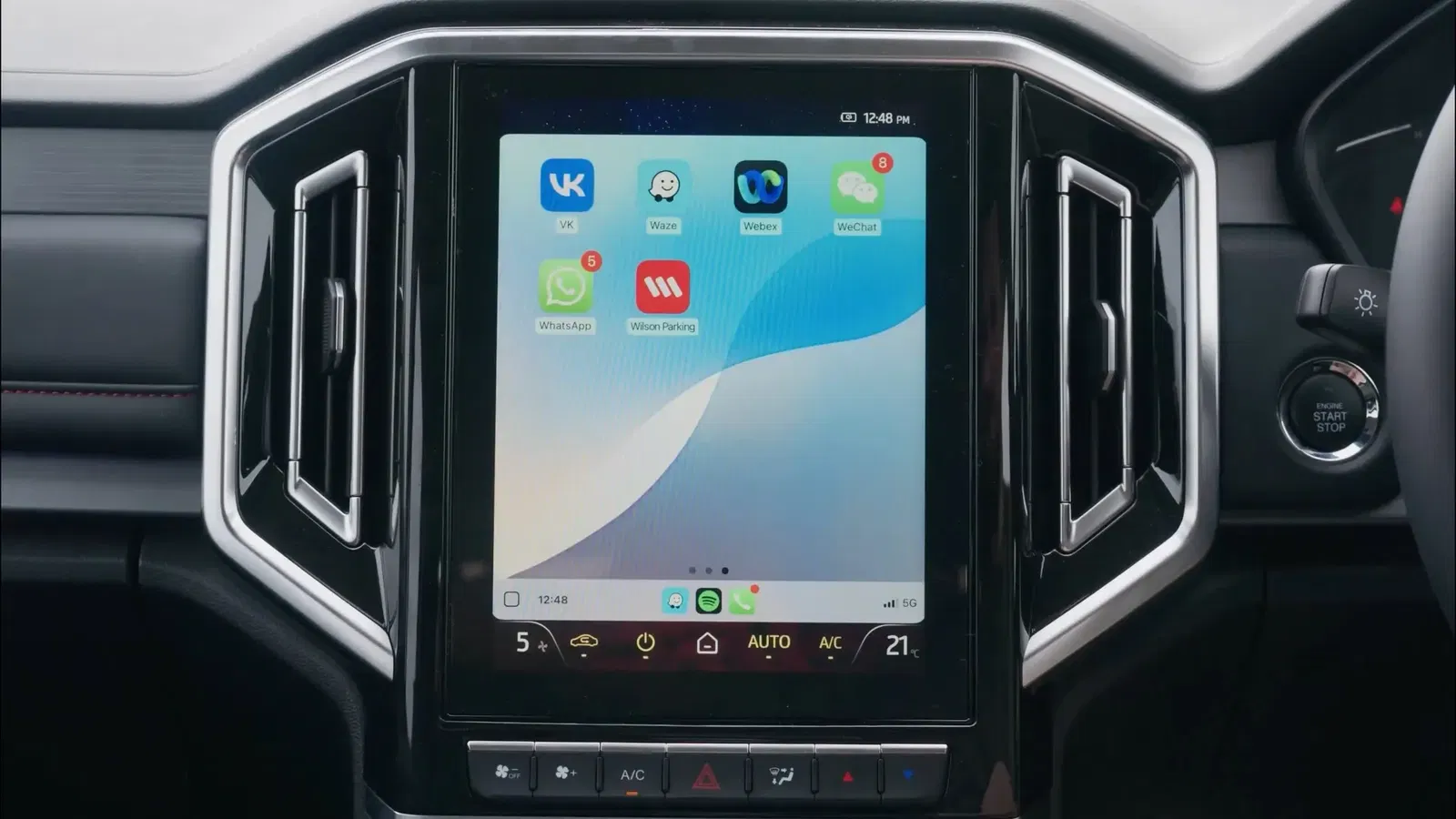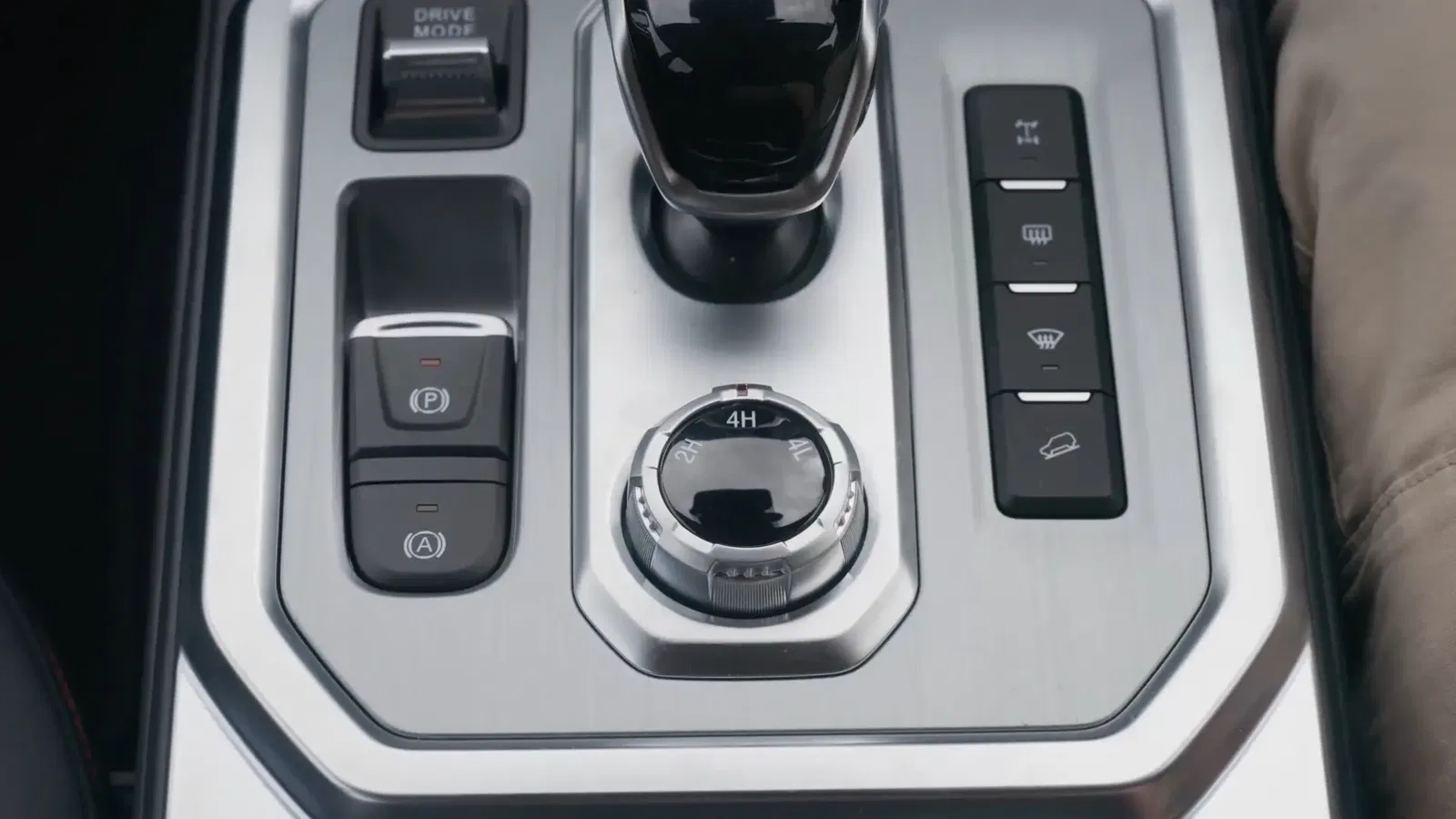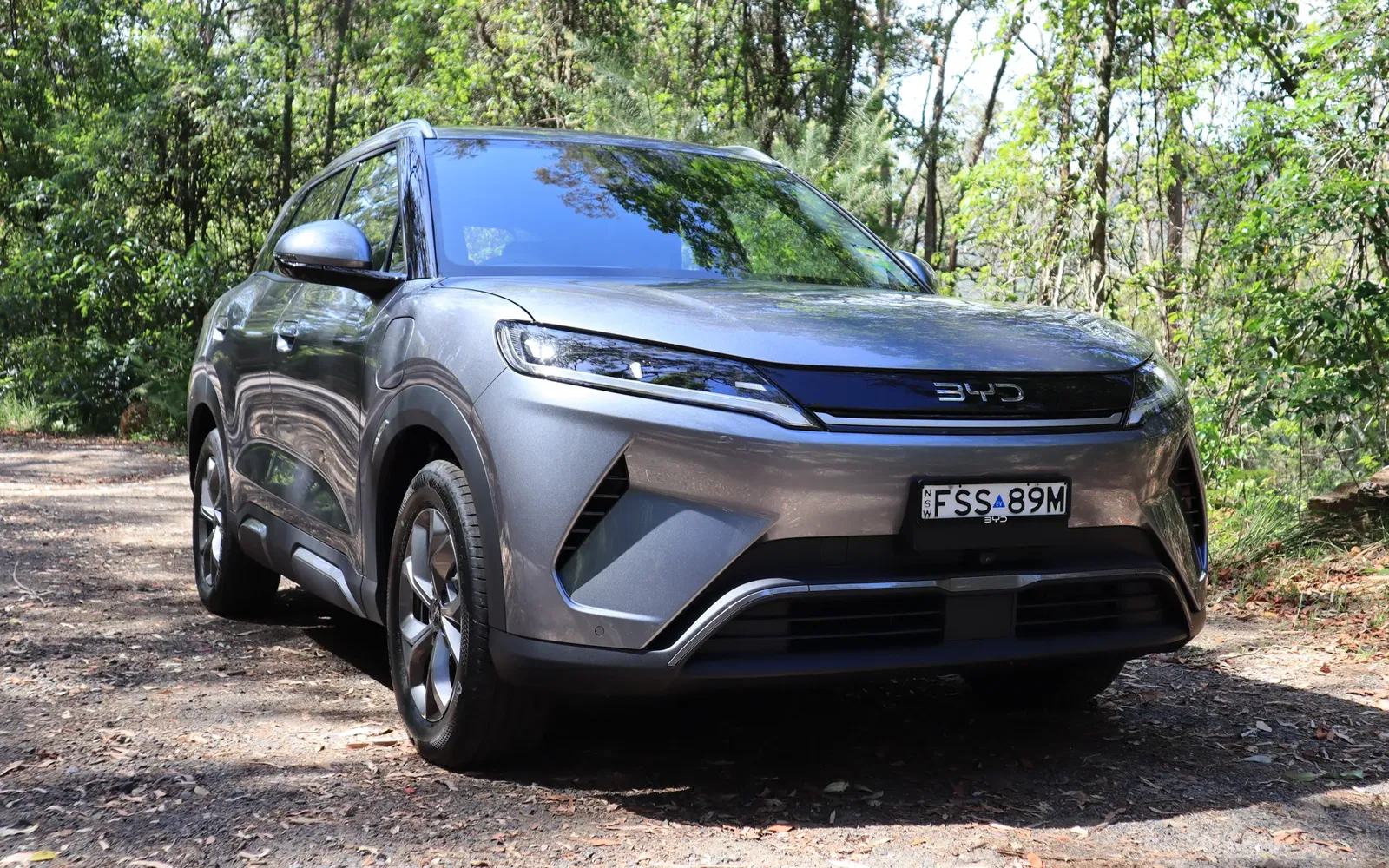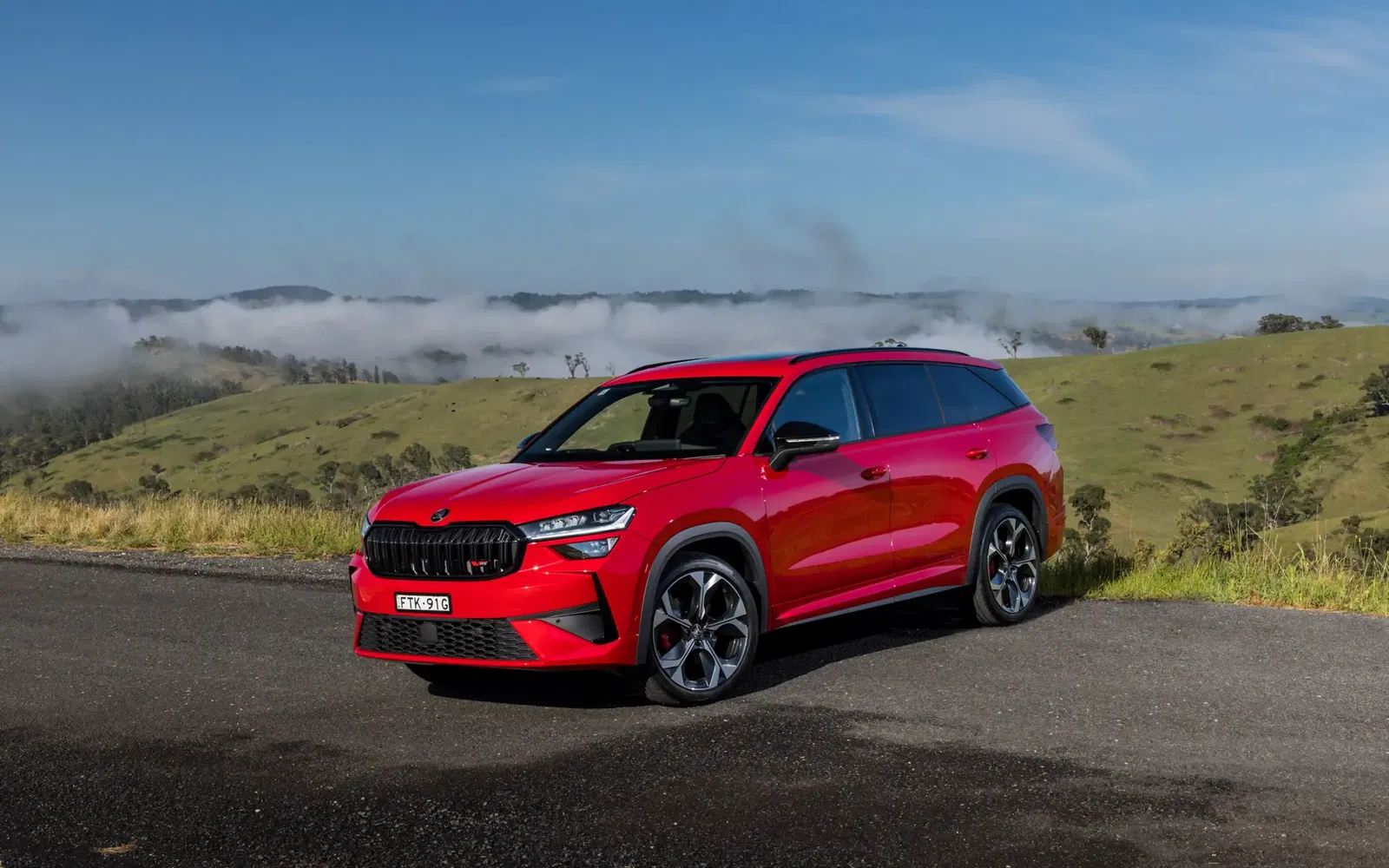
2025 JAC T9 Oasis Review
The 2024 JAC T9 Oasis offers tough looks and decent tech, but is let down by poor comfort, performance, build quality and value compared to key rivals.
F
UNGRADED

F
UNGRADED

What people are saying:
Pros
- Aggressive and appealing exterior styling
- Impressive payload capacity
- Reasonable interior technology
Cons
- Underpowered drivetrain
- Questionable build quality and fit/finish
- Poor ergonomic driving position
The 2024 JAC T9 Oasis enters the fiercely competitive dual-cab ute market boasting aggressive styling and a generous payload capacity, positioning itself as an appealing alternative to more established offerings like the Ford Ranger and GWM Ute. However, the journey to this review was anything but conventional.
After multiple attempts to secure a media loan vehicle were met with rejection and shifting excuses—from claims the car was involved in an accident, to it being reserved exclusively for fleet use—we decided to take matters into our own hands. We purchased a brand-new T9 Oasis outright through CarSauce Buy to ensure we could deliver an honest, in-depth review of the vehicle, free from manufacturer influence or restriction.

And it hasn’t taken long to discover some concerns. We’ve already encountered two issues during our ownership. Firstly, a strange sound from the steering revealed that the factory had failed to properly grease a rubber boot in the steering rack—raising questions about what other steps may have been missed during assembly. This was fixed under warranty.
Secondly, despite purchasing the vehicle in April 2025, a known safety recall issued on December 14, 2024, relating to the turbo actuator, had not been addressed. This is a particularly serious oversight, as failure of the actuator could result in sudden power loss—potentially causing a dangerous situation on the road. These early warning signs raise valid concerns about quality control and after-sales support.So should you buy one? Probably not, but let's talk about it.
How much does the JAC T9 cost?
The JAC T9 Oasis is priced at $42,662, with the Haven variant at $45,630 (excluding on-road costs). However, this represents poor value for money in its current state when compared to rivals such as the GWM Cannon, which offers more equipment and a more powerful 2.4-litre turbo diesel engine, as well as 3.5-tonne towing capacity. For example, the GWM Cannon Vanta - its most luxury variant—costs $45,490 drive-away.
Additionally, we were able to purchase our T9 Oasis for approximately $6,000 less using CarSauce Buy. While this is a testament to the value our car buying service can deliver, it also indicates that JAC utes are already heavily discounted from the outset—an early red flag about residual value and demand.

2025 JAC T9 Pricing:
- Oasis - $42,662
- Haven - $45,630
Note: Prices exclude on-road costs.
A win, the designers can definitely design.
The T9 is undeniably attractive, especially from the front. It features aggressive lines, sharp LED headlights, sequential indicators, and an imposing black grille framed by scratchy but purposeful-looking black plastic cladding.
The visual impact is enhanced by tasteful use of chrome highlights and an optional white paint finish that contrasts nicely with the darker elements. Side-on, the 18-inch alloy wheels in both Oasis and Haven trims suit the vehicle’s proportions well, and the standard metal side steps are functional and stylish.

The large, sculpted bonnet and flared wheel arches contribute to its commanding presence, and the rear LED tail lights—reminiscent of the Kia Sorento—add a premium touch, even if their visibility is limited at oblique angles.
However, some aspects of the design are let down by cost-cutting measures. The fake recovery hooks at the front, while visually aggressive, offer no practical function. Similarly, the lack of roof rails or privacy glass in the Oasis trim makes it feel incomplete next to competitors.

Fit and finish is inconsistent, particularly around the rear tub, where panel gaps and flex suggest uneven manufacturing standards. These inconsistencies, paired with non-functional design cues, detract slightly from what is otherwise one of the most striking ute designs in the segment.





JAC does not support your back.
The interior of the JAC T9 Oasis makes a solid first impression with a clean, contemporary design and relatively generous use of soft-touch materials for a vehicle in this price bracket. The 10.4-inch portrait-oriented infotainment system looks modern and includes wired Apple CarPlay and Android Auto, though it lacks wireless functionality. The user interface is functional but not particularly intuitive, and while the system performs adequately, Bluetooth audio quality is sub-par, encouraging drivers to rely on USB connections for better audio fidelity.

Sitting ahead of the driver is a 7.0-inch digital instrument cluster, which offers only basic readouts and limited customisation. The display’s resolution is acceptable, but its animations are rudimentary. Uniquely, it includes a “Golden Dragon” theme accessed via a button on the steering wheel—an unapologetically Chinese touch that may not appeal to all buyers.

The cabin also features a standard speaker setup, which delivers underwhelming audio quality and lacks depth, particularly in bass and midrange clarity. Those expecting a refined sound system will likely be disappointed, even at this price point.

Despite some clever inclusions—like physical climate control buttons, a wireless charging pad, and a decently sized glove box—ergonomic flaws quickly become apparent. The absence of a telescopic steering wheel severely compromises the driving position for taller drivers. Coupled with flat, unsupportive seats and a high floor (typical of body-on-frame construction), this results in a driving posture that can feel awkward and tiring over longer distances. The seats offer limited under-thigh support, and there’s no lumbar adjustment. Additionally, while the dashboard is cleanly laid out, certain materials such as the hard plastic lower panels and scratchy switchgear remind you of the T9’s budget-focused roots.

Storage is reasonable, with decent door pockets and a centre console bin, and the steering wheel itself—a two-spoke design—feels adequate in hand despite its peculiar metal-look insert meant to mimic sporty aspirations.

In summary, the front cabin of the JAC T9 Oasis is visually modern but let down by its comfort and functionality. While it offers some high-tech appeal, the underlying ergonomics, build quality, and creature comforts lag behind what rivals like the GWM Cannon can deliver.
I hope you dislike your rear passengers.
The rear seat accommodation in the JAC T9 Oasis reflects its utilitarian underpinnings. Legroom is serviceable for average-height adults, and headroom is generous enough for taller passengers due to the vehicle’s upright proportions.
However, the seat base is flat with minimal bolstering, resulting in a lack of thigh support and comfort on longer journeys. The backrest is also quite vertical, which, combined with the limited seat padding, makes it less comfortable than what is offered in rivals like the GWM Cannon or Isuzu D-Max.

Practicality remains a mixed bag. There is under-seat storage available when the rear bench is flipped up, and additional hidden compartments are tucked behind the seatbacks - ideal for storing small tools or loose items. However, in-cabin amenities are sparse in the Oasis trim. A single USB-A port is the only dedicated power option in the rear, with the Haven trim offering slightly more in the form of USB-C and 220V sockets. The omission of even basic features such as dual USB ports underlines its budget positioning.

The centre armrest is a welcome inclusion, featuring two cupholders and a reasonable width for two passengers to share. Rear air vents are present, which is a positive, but materials around the doors are mostly hard plastics, making the space feel more durable than plush.
Three seatbelts and two ISOFIX mounting points ensure family-friendliness, but the experience overall is best described as functional rather than refined. For buyers frequently using the second row for adult passengers, better comfort can be found elsewhere in the segment.
I hope you have big biceps.
The JAC T9 shines on paper with a respectable 1,045kg payload capacity, which is actually better than many rivals including the Ford Ranger Sport. However, its braked towing capacity is limited to 3,200kg, falling short of the 3,500kg standard seen across most mainstream dual-cab competitors—including the GWM Cannon. This shortfall may not impact light-duty users, but for those towing heavy trailers, boats, or caravans, the reduced capacity could be a significant limitation.
Closer inspection reveals additional compromises in usability and everyday practicality.

One of the T9’s biggest drawbacks is its tub design. The tailgate is extremely heavy and lacks gas struts or torsion assistance, making it genuinely difficult to open and close, particularly with one hand or when the vehicle is on an incline. The spray-in tub liner, while appreciated, is poorly finished with sharp edges that can easily scratch or even cut your hands. Additionally, the build quality around the tub area is inconsistent, with large panel gaps and visible flex that raise long-term durability concerns.

Tub dimensions in the JAC T9 measure 1,520mm in length, 1,590mm in width, and 470mm in depth. While these figures are adequate for standard work and recreational use, they fall short of the segment benchmarks. By comparison, the GWM Cannon offers a 1,560mm long, 1,614mm wide, and 563mm deep tub—noticeably more capacious in every dimension. This extra space makes the Cannon more practical for tradies and weekend warriors alike, as it can accommodate a wider range of tools, equipment, and gear without modification.

The JAC also lacks clever tub-access features found in rivals. There’s no integrated step in the tailgate (as found in the Ford Ranger), and no pull-out step like the one on the GWM Cannon XSR. Accessing the rear bed often requires stepping on the tyre, which is inconvenient and potentially unsafe when the vehicle is wet or muddy.
Slow enough for a Ranger to tailgate you.
The 2024 JAC T9 is equipped with a 2.0-litre four-cylinder turbo-diesel engine delivering 125kW of power and 410Nm of torque. This engine is paired with an eight-speed automatic transmission. The T9 also features a part-time four-wheel-drive system supplied by BorgWarner, which includes a low-range transfer case and a mechanically locking rear differential. Drive modes include Eco, Normal, Sport, and Snow.

While the specification list covers core essentials expected in a 4WD ute, the powertrain’s outputs fall short compared to competitors in the segment. Notably, the GWM Cannon’s 2.4-litre turbo-diesel engine produces 135kW and 480Nm, offering greater torque and stronger towing potential.
Overall, the T9’s drivetrain inclusions are functional and suitable for basic off-road and towing needs, but lack the refinement and performance edge found in rivals.
Extremely Mid. Oh, and slow.
On sealed roads, the JAC T9 Oasis delivers an experience typical of body-on-frame dual-cab utes in this segment, but fails to offer the refinement seen in newer competitors. The suspension is tuned firmly in the rear to accommodate its 1,045kg payload rating, and as a result, unladen ride quality suffers. It tends to bounce and jitter over uneven surfaces, particularly on coarse country roads and corrugations. Around town, smaller imperfections in the road surface are also transmitted directly into the cabin.

The front suspension does a better job of soaking up bumps and provides reasonable confidence when cornering, but the rear’s firm behaviour and limited damping sophistication can make for a choppy ride when there’s no load in the tray. Compared to the GWM Cannon, which benefits from more settled suspension tuning, the T9 feels less composed and more rudimentary in its ride quality.
Steering feel is overly light in default mode, resulting in a vague and disconnected driving experience, particularly at higher speeds. However, selectable steering modes—Eco, Normal, and Sport—do offer some improvement. Sport mode, in particular, helps dial in a touch more resistance and weight to the steering wheel, making it slightly more confidence-inspiring on the highway. Still, it remains short of the natural feel offered by segment leaders like the Ford Ranger.

The T9’s 0–100km/h time, recorded at 11.78 seconds, places it among the slower diesel dual-cab utes in the market. This lack of urgency is most noticeable during overtaking manoeuvres or on uphill climbs. Turbo lag is significant off the line, and while the eight-speed automatic gearbox is generally smooth, it can hunt for gears under load or in cruise control, further dampening the on-road refinement.

Road noise insulation is adequate for the segment, though tyre roar and wind noise become more noticeable at freeway speeds. Visibility from the driver’s seat is good thanks to large side mirrors and a high seating position, but the lack of front parking sensors in the Oasis grade is an unfortunate omission.
So, does the lack of power translate to better fuel economy? No. Real-world fuel economy averages around 9.7L/100km, higher than the claimed 7.6L/100km.

Ultimately, the JAC T9 performs acceptably on-road for its class, but does little to stand out. Those expecting passenger-car comfort or responsive dynamics will find better results in more polished rivals.




On-Paper Competence, Full Test to Come
A full off-road review of the JAC T9 is currently underway and will be published soon. On paper, the T9 appears to be a fully capable off-roader. It includes a BorgWarner part-time four-wheel-drive system with a low-range transfer case, a mechanically locking rear differential, and drive modes including Snow.
Key off-road specifications include 210mm of ground clearance, a 650mm wading depth, a 27-degree approach angle, and a 23-degree departure angle. These numbers position it behind some segment leaders like the Ford Ranger, but still within the acceptable range for general off-road use.

Despite the solid hardware inclusions, concerns around reliability have already surfaced. At least one media outlet has reportedly experienced a front differential issue while testing the T9 off-road. This raises valid questions about durability and long-term component integrity under harsh conditions.
We will thoroughly test our own JAC T9 in off-road environments in the coming weeks to evaluate how it performs under pressure. Until then, its off-road capabilities remain promising on paper but will need to be verified in the field.

Australia’s Safest Ute, If You Turn Everything Off.
JAC proudly claims the T9 to be Australia's safest ute, underpinned by its 5-star ANCAP rating tested against the latest and most stringent 2025 safety protocols. On paper, the safety credentials are undeniably strong, with impressive crash-test results across all categories—scoring 85% for adult occupant protection, 87% for child occupant protection, 87% for vulnerable road user protection, and 89% for safety assist.
The vehicle is fitted with a suite of active safety systems, including adaptive cruise control, lane-centring assist, autonomous emergency braking, and traffic sign recognition. These features function competently in controlled conditions and make a strong case for the T9’s theoretical safety advantage.

However, real-world usability tells a different story. Two systems in particular—the driver monitoring alert and over-speed warning—are not only overly sensitive but also difficult to disable permanently. The driver monitoring regularly triggers false alerts even when drivers are attentive, while the over-speed warning blares constantly with minimal threshold tolerance. In some scenarios, these systems prove so distracting that they could pose a hazard, requiring drivers to fumble through menus mid-drive to temporarily silence the alerts.
Ultimately, while the JAC T9 may crash well and meets all the technical benchmarks of modern safety, the intrusive and overzealous nature of its active systems significantly detracts from the day-to-day driving experience.
Decent, But Check Everything Before You Pick Yours Up.
The T9 offers a seven-year unlimited kilometre warranty with capped-price servicing. Scheduled maintenance is required every 15,000 kilometres or 12 months—whichever comes first. These intervals are designed to maintain reliability and performance but also help owners plan their expenses well in advance.

JAC's published capped-price servicing schedule is as follows:
- 15,000km / 12 months – $269
- 30,000km / 24 months – $511
- 45,000km / 36 months – $390
- 60,000km / 48 months – $521
- 75,000km / 60 months – $442
- 90,000km / 72 months – $651
- 105,000km / 84 months – $285
This results in a total servicing cost of $3,069 over seven years or 105,000 kilometres. Costs fluctuate significantly between intervals, with the 90,000km service standing out as the most expensive. Despite this, the schedule compares reasonably well against segment rivals when viewed over the long term.
However, as with many newer brands establishing themselves in the market, prospective owners should also consider the quality of service and responsiveness of the dealership network. Our own experience revealed delays in recall rectification and minor quality control lapses, reinforcing the importance of after-sales support in the ownership equation.

What do you get with the JAC T9?
JAC T9 Oasis standard features:
- 10.4-inch infotainment with wired Apple CarPlay/Android Auto
- Single-zone climate control
- Leather-accented seats
- Driver power seat
- 18-inch alloy wheels
- Wireless charging pad
- LED headlights and daytime running lights
- Spray-in bed liner
- Side steps
- Rear parking sensors
- Reversing camera
- Heated and power-folding side mirrors
- Automatic headlights and rain-sensing wipers
- 7.0-inch digital instrument cluster
- Rear air vents
- Fog lamps (front and rear)
- Keyless entry and push-button start
Haven adds:
- 360-degree camera system
- Heated front seats
- Front parking sensors
- Privacy glass
- 220V power outlet (rear)
- Rear USB-C port
- Auto-folding side mirrors with puddle lamps
- Quilted leather interior trim
- Electrochromatic rear-view mirror
- Passenger power seat
- Optional brown or black interior colour scheme

Final thoughts on the JAC T9
The 2024 JAC T9 Oasis is a dual-cab ute that leaves a mixed impression. On the surface, it has all the makings of a strong competitor—aggressive styling, a generous payload, and a long list of standard features. It also boasts a strong 5-star ANCAP safety rating under the latest 2025 protocols, and the inclusions—such as adaptive cruise control, rear diff lock, and a BorgWarner 4WD system—are all solid on paper.
However, in practice, the vehicle is let down by poor drivetrain refinement, limited braked towing capacity, and underwhelming ergonomics, particularly in the front seats where the lack of steering wheel adjustment and minimal under-thigh support compromise comfort. The real-world driving experience is further hampered by turbo lag, vague steering, and intrusive active safety systems that can become distracting rather than helpful.
Concerns also emerge around build quality and after-sales support. Our vehicle required immediate attention for an ungreased steering rack boot, and a serious recall issued in December 2024 was not addressed before our delivery in April 2025. These quality control lapses raise questions about JAC’s consistency and support framework. JAC did respond to us on this, suggesting it was an isolated issue and it was going to conduct a full investigation (which is the right response) - but even then, I'm not filled with confidence.

Compared with rivals such as the GWM Cannon—which offers more torque, better tub dimensions, superior comfort, and a lower price—the T9 struggles to justify its value proposition. While we were able to secure a significant discount through CarSauce Buy, this also reflects how heavily discounted the T9 is already on the open market.
The JAC T9 is not without merit, and our long-term testing will determine how well it holds up to extended use, including a full off-road evaluation. But based on our current findings, it’s hard to confidently recommend it over better-established and more polished alternatives. For now, this ute is best approached with caution.

Saucey rating breakdown
Saucey rating breakdown
FAQ
Is the JAC T9 good value?
It's competitively priced but overshadowed by better-equipped, cheaper rivals like the GWM Ute.
How powerful is the JAC T9?
It offers modest performance with 125kW and 410Nm, sufficient for daily tasks but underwhelming overall.
Does the JAC T9 have good off-road capability?
Adequate, with basic off-road hardware, but trails rivals in key off-road specs.
Sign up to our newsletter
Be the first to know when we drop new car reviews.
.avif)




%20Calligraphy%20-%2003.webp)